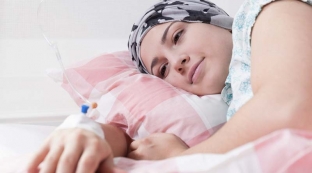Breast cancer is the most common in the world of oncological pathology among women. The risk of being exposed to this disease exists in absolutely every person, regardless of gender. Men get sick 100 times less often, and pay much less attention to this problem. However, the statistics are growing every year. The society is not sufficiently informed not only about the features of the clinical picture and methods for diagnosing breast cancer, but also about all aspects of the effective treatment of this disease. Only an integrated approach to the treatment of breast cancer gives the maximum effect.
Breast Cancer Chemotherapy
Surgical removal of the neoplasm is just one of several components treatment regimens for breast cancer. Due to the always existing probability of metastasis of tumor cells throughout the body, the patient must necessarily undergo a certain number of courses of chemotherapy.
There are two types of chemotherapy for breast cancer.
- Adjuvant chemotherapy is given if the patient's neoplasm is large enough to be completely removed by surgical treatment. Adjuvant chemotherapy is performed to destroy only latent metastases, & nbsp; after radical removal primary tumor focus.
- Neoadjuvant chemotherapy is performed before surgery, in order not only to destroy existing metastases, but also to reduce the size of the primary tumor focus. This is done in order to exclude the possibility of incomplete resection of the neoplasm during surgical intervention. There is another important plus of preoperative chemotherapy – with such a treatment regimen, the likelihood of developing resistance to the drugs used during the course of chemotherapy is significantly reduced, which often happens in the process of tumor growth. Thus, the effectiveness of complex therapeutic measures is significantly increased.
The presence of metastases in the liver and brain, which significantly worsen the patient's condition, as well as severe general intoxication of the body and cachexia, are direct contraindications to a course of chemotherapy.

Hormone therapy for breast cancer
Estrogen, a female hormone, has a direct effect on the development of breast cancer, as evidenced by the receptors for this hormone in tumor tissues. That is why hormone therapy is an important component in the complex of therapeutic measures to eliminate breast cancer. To reduce the effect of estrogen on the development of breast cancer, the following methods are used:
- estrogen antagonists – block estrogen receptors in the tumor;
- aromatase inhibitors – turn off the function of the aromatase enzyme – conversion of androgens in the female body into estrogens;
- progestins – reduce the intrahepatic synthesis of estrogens, which occurs by converting them from androgens;
- off ovarian function – performed by oophorectomy, radiation, or the most gentle method – the use of gonadotropin-releasing hormone agonists. The variant of the drug effect on the ovaries is the most preferable, since, unlike other methods, it causes reversible changes in the functioning of the ovaries.
Radiation therapy for breast cancer
It is an absolutely essential component in a breast cancer treatment regimen. Existing methods of radiation therapy make it possible to locally affect both the primary focus and distant metastases, which makes it possible not to expose the entire body to radiation. Three types of radiotherapy are used for breast cancer:
- external radiation therapy;
- intensity modulated radiation therapy;
- interstitial radiotherapy, in which a radioactive substance is temporarily placed in the tissues of the tumor, thus reducing its size and making it resectable.
The type and scheme of radiotherapy is selected strictly individual, taking into account all the morphological features of the tumor. Often seen the following treatment regimens:
- non-invasive ductal cancer: tumorectomy or simple mastectomy + external gamma therapy + antiestrogens.
- Non-invasive lobular cancer: mastectomy. Radiation therapy is not used.
- Early cancer: tumorectomy or quadrantectomy + remote gamma therapy on the remaining gland tissue + ovarian shutdown and antiestrogens + adjuvant chemotherapy.
- Primary resectable cancer with lymph node involvement: mastectomy + chemotherapy (depending on tumor size) + hormonal therapy + postoperative remote gamma therapy.
- Locally advanced cancer: neoadjuvant chemotherapy or remote gamma therapy + surgical treatment + adjuvant chemotherapy + hormonal therapy + remote gamma therapy.
- Edematous-infiltrative forms of cancer: neoadjuvant chemotherapy + surgical treatment + adjuvant chemotherapy + hormonal therapy + remote gamma therapy.
- Latent cancer: neoadjuvant chemotherapy + mastectomy + remote gamma therapy + hormonal therapy.







Add a comment